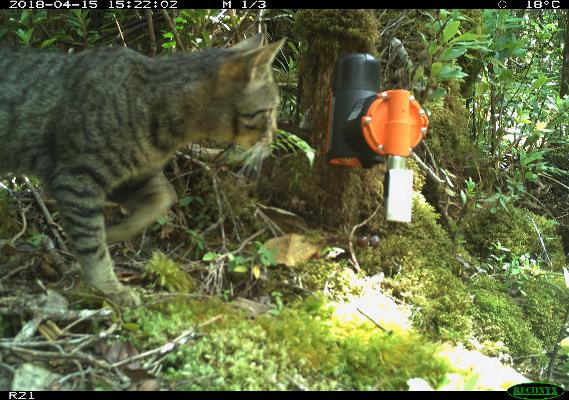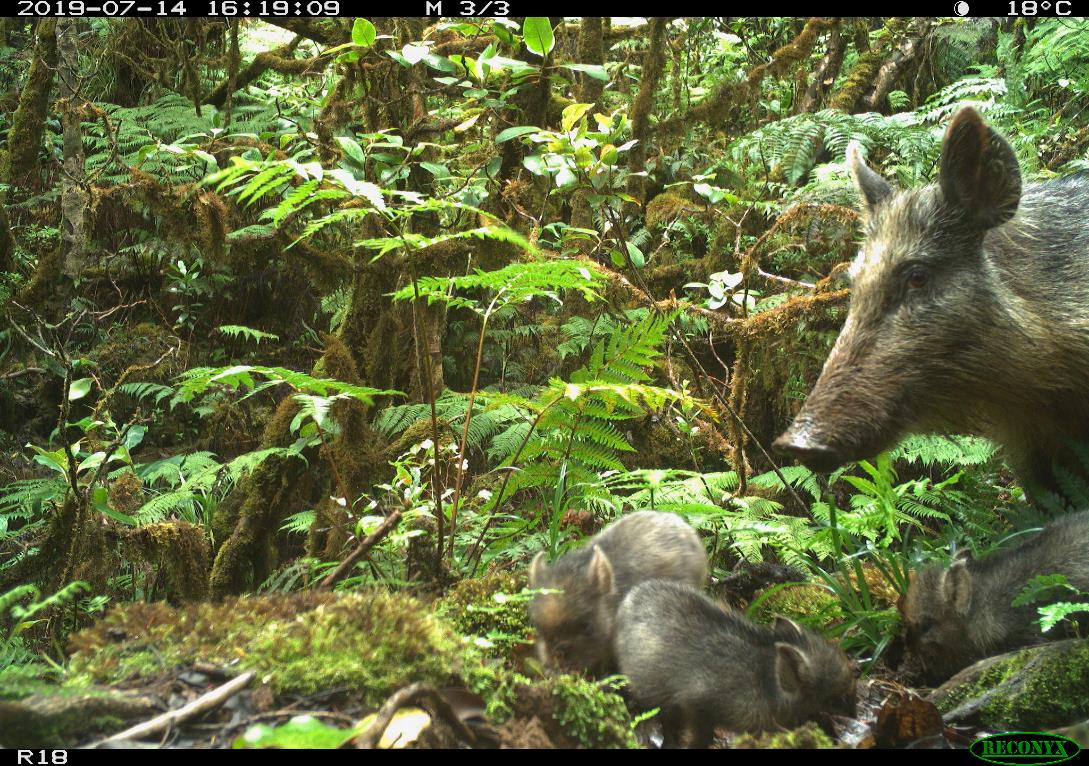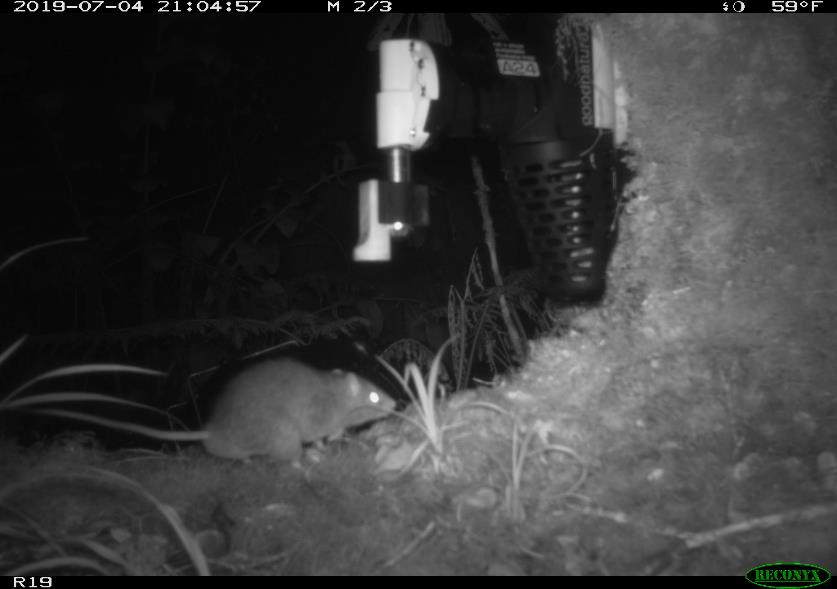As KFBRPs fans may know, we put in a lot of work into maintaining our trap grids to safeguard our native forest birds and their offspring from rodents. These traps also protect native plants from rat predation.
With over 425 A24 traps in action it is important to ensure that traps are killing what they’re supposed to: rats and mice, not birds or other animals. We check traps every 4 months to rebait, confirm functionality and assess performance through corpse counts and the counters mounted on the traps. During these checks, we typically find 0-3 rat or mouse corpses and often the counter tallies exceed the number of corpses counted. This mismatch led us to assume that these traps kill more rodents than found below traps, presumably due to the rapid decay of a small animal carcass in the Alakaʻi and scavenging by other animals. To estimate how many animals (rodents and other) we are missing with carcass counts (i.e., how many carcasses are scavenged and how fast they decay) we ran two studies of decay using rat and bird carcasses previously killed by USDA for wildlife control purposes.
The first study began in December 2018 when we placed 30 non-native bird carcasses on the plateau at our fenced field site, where the scavenging community included insects, cats, rodents, and birds, but not ungulates. We have been controlling rodents at this site since March 2015. We checked carcasses regularly to document decay and pinpoint the stage when carcasses typically are scavenged or go missing. After 4 months, 19 of the 30 were considered easily detectable, making it very likely that we would find a bird carcass in winter in this environment.
In the second study, which occurred in summer, we investigated if rats would decay at the same rates as birds. We also included a field site that is not fenced, so pigs, deer, and goats were present and potentially scavenging carcasses. We began rodent trapping at this site in fall 2018.
During the summer trial, we deployed 123 bird and rat carcasses from May to September, 2019. Sixty carcasses, 30 bird and 30 rat, were deployed at each site, fenced and unfenced. We set up game cameras to watch if a carcass was to be scavenged by who and when. At the fenced site 51 of the 60 remained easily detectable. At the unfenced site, only 34 of the 60 carcasses remained easily detectable. At the unfenced site, 11 carcasses were scavenged by pigs in the first 15 days.
This small but very important study gives us “formulae” by which we can adjust our corpse counts at each of our sites and helps explain the mismatch between counter tallies and corpse counts. In the fenced site, we can assume we are killing 15-35% more rats than we find below traps, whereas in the unfenced site we estimate we are killing almost 50% more rats than we find. It also reassures us that over the five years we have been running these traps at our fenced site, we haven’t been killing a lot of non-target species, such as birds, that we have failed to detect on our trap checks. It seems like these A24s are really doing a good job of reducing rodent populations!






 Bryn Webber
Bryn Webber